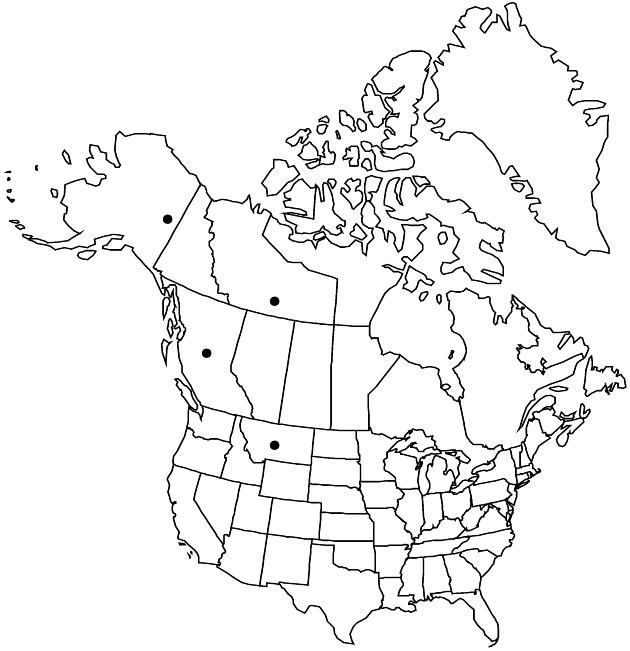Difference between revisions of "Antennaria densifolia"
Bull. Natl. Mus. Canada 101: 26. 1945.
FNA>Volume Importer |
FNA>Volume Importer |
(No difference)
| |
Revision as of 18:38, 24 September 2019
Dioecious. Plants 3.5–16 cm. Stolons 1–2 cm. Basal leaves 1-nerved, spatulate to cuneate, 3–7 × 2–5 mm, tips mucronate, faces gray-tomentose. Cauline leaves linear, 2–13 mm, distal flagged. Heads 2–5 in corymbiform arrays. Involucres: staminate 3–6.5 mm; pistillate 4.5–7.5 mm. Pistillate involucres 4.5–7.5 mm. Phyllaries distally light brown, dark brown, or black. Corollas: staminate 2–3.5 mm; pistillate 2.5–4.5 mm. Cypselae 0.8–1.5 mm, glabrous; pappi: staminate 2.5–3.5 mm; pistillate 2.5–3.5 mm. 2n = 28.
Phenology: Flowering summer.
Habitat: Subalpine-alpine limestone talus
Elevation: 700–2800 m
Distribution

B.C., N.W.T., Yukon, Alaska, Mont.
Discussion
Antennaria densifolia is found on limestone talus below treeline in the MacKenzie, Richardson, and Ogilvie mountains of the District of MacKenzie and Yukon Territory and in Granite County, Montana (R. J. Bayer 1989c). It differs from A. aromatica in being non-glandular and in other characters. Herbarium specimens (in DAO) from British Columbia that morphologically appear to be a strictly gynoecious form of A. densifolia may be apomicts related to A. alpina that are derived from A. densifolia, a sexual progenitor of the complex.
Selected References
None.